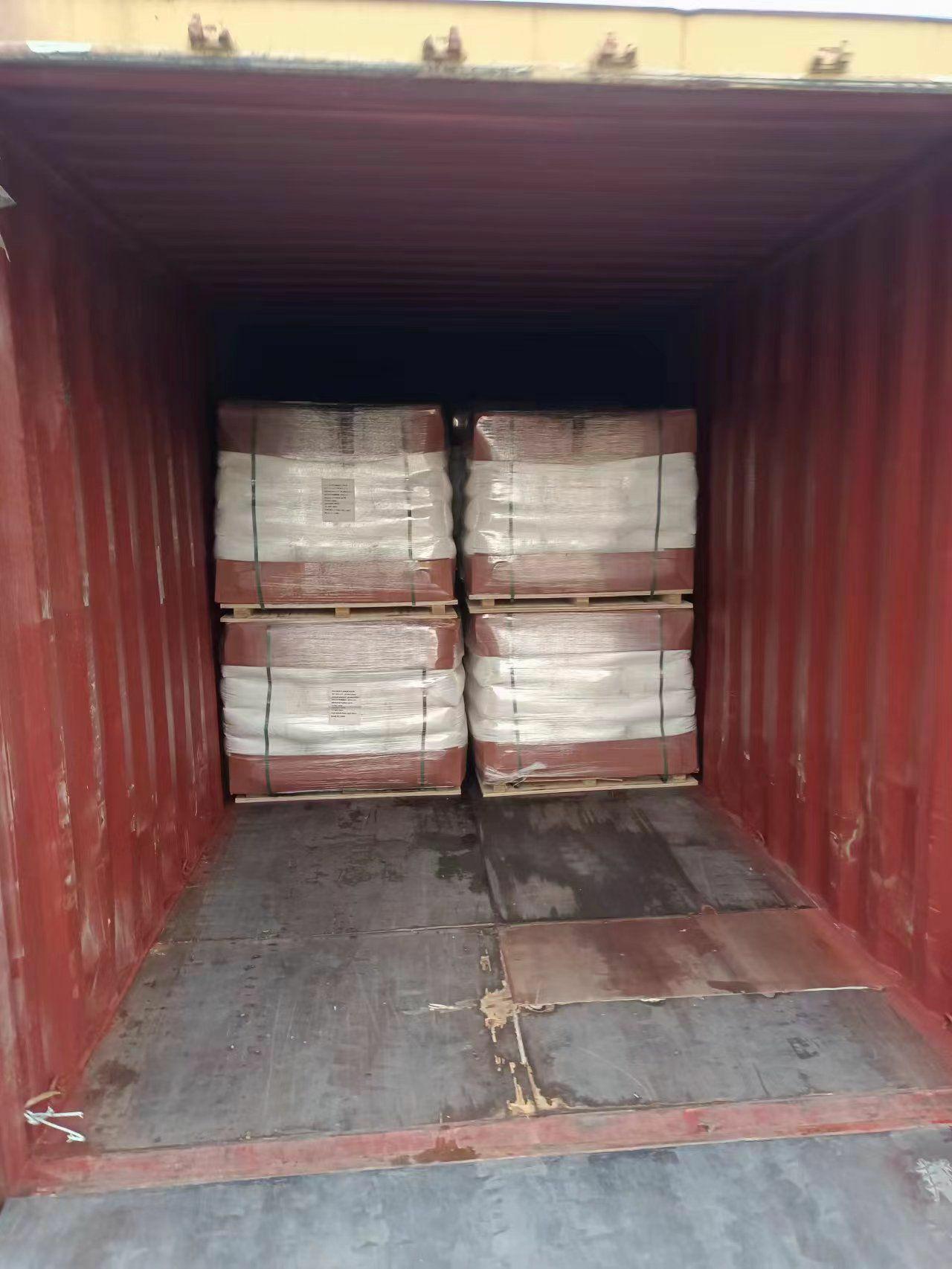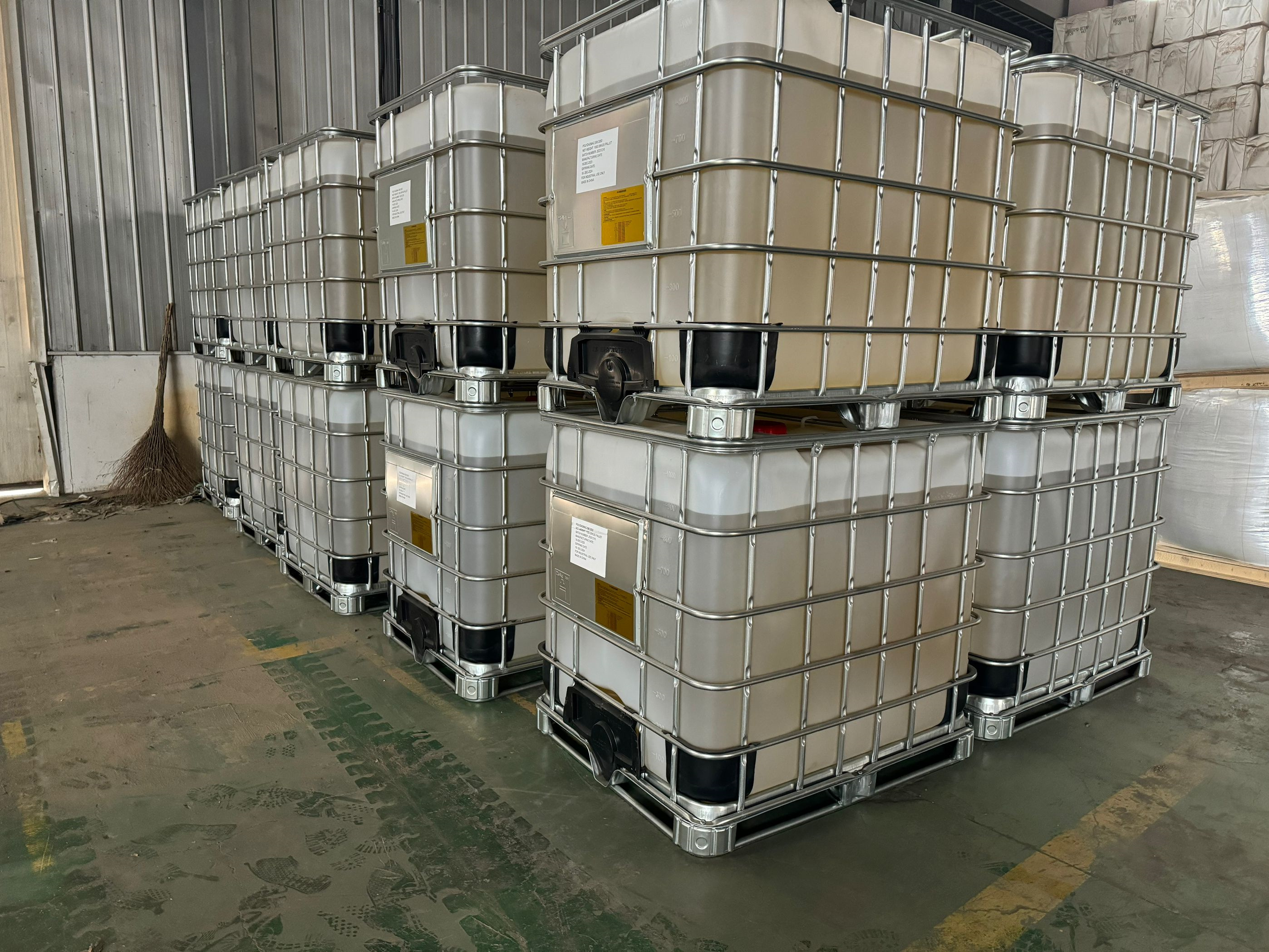zetag 9248 FS is a kind of emulsion cationic polyacrylamide with 50-60% charge,maily used for wastewater treatment and sludge dewatering.asiafloc EM6008 can replace of it with better result.
cationic polyacrylamide zetag 9248FS can be replaced by Asiafloc C6008
Material
- polydadmac
Color
- light yellow
Application
- water treatment ,mineral processing
Certificate
- ISO9001 ,ISO14001
Place of Origin
- China
Other Names
- cationic polyacrylamide,cationic flocculant,CPAM
Brand Name
- asiafloc
Usage
- water treatment ,mineral processing ,textile ,oil and gas
cationic polyacrylamide zetag 9248FS can be replaced by Asiafloc C6008
zetag 9248 FS is a kind of emulsion cationic polyacrylamide with 50-60% charge,maily used for wastewater treatment and sludge dewatering.asiafloc EM6008 can replace of it with better result.
Cationic polyacrylamide (CPAM) is a water-soluble synthetic polymer widely utilized in various industrial applications due to its ability to flocculate, coagulate, and facilitate the removal of contaminants. CPAM is a derivative of polyacrylamide (PAM), modified with positively charged cationic groups, which enhances its performance in many processes, particularly in water treatment and other industries that require high-performance flocculants or coagulants. Below is a detailed exploration of the main applications of cationic polyacrylamide.
1. Water Treatment
One of the most significant applications of cationic polyacrylamide is in water and wastewater treatment. Due to its high charge density, CPAM is highly effective in aggregating negatively charged particles, such as suspended solids, organic matter, and pollutants, into larger flocs. This makes it a powerful agent in various water treatment processes, including:
a. Municipal and Industrial Wastewater Treatment
CPAM is commonly used in municipal and industrial wastewater treatment plants to enhance the coagulation and flocculation processes. It is used in treating wastewater from industries such as textiles, paper mills, oil refineries, food processing, and chemical manufacturing. The cationic nature of the polymer ensures that it works well with negatively charged contaminants, such as dyes, suspended solids, and organic molecules, allowing their easy removal via sedimentation or filtration.
b. Drinking Water Purification
In drinking water purification, CPAM helps in the clarification process by removing fine particles and organic compounds that affect water clarity and safety. By aggregating these particles into larger, easily removable flocs, CPAM aids in producing clean and potable water.
c. Sludge Dewatering
CPAM is also used in the dewatering of sludge generated from various water treatment processes. The polymer’s flocculating properties enhance the aggregation of fine solids into larger clusters, allowing for easier separation and removal. This reduces the volume of sludge, making it easier and more economical to manage.
2. Pulp and Paper Industry
In the pulp and paper industry, cationic polyacrylamide plays a crucial role in the production of paper and in the treatment of pulp and paper mill effluents.
a. Paper Manufacturing
CPAM is used in the paper manufacturing process to improve retention, drainage, and formation. It helps retain fine particles and fillers in the paper, improving the overall quality and strength of the paper produced. The positive charges on the polymer interact with the negatively charged fibers, resulting in better flocculation of fillers and fibers, which reduces fiber loss and improves paper yield.
b. Wastewater Treatment in Pulp Mills
The pulp and paper industry generates significant amounts of wastewater, which contains high levels of suspended solids, oils, and other contaminants. CPAM is used to treat this wastewater, helping in the coagulation and flocculation of these contaminants, making them easier to remove in the subsequent treatment stages.
c. Sludge Treatment and Disposal
Similar to its role in water treatment, CPAM is used to treat the sludge generated in pulp and paper mills. By aiding in the aggregation of solid particles, it helps in reducing the volume of sludge and enhances its dewatering, which is crucial for reducing disposal costs and environmental impact.
3. Oil and Gas Industry
The oil and gas industry is another major sector where cationic polyacrylamide finds application, particularly in drilling, enhanced oil recovery (EOR), and wastewater treatment.
a. Drilling Fluids
CPAM is used in drilling muds to improve the performance of drilling fluids. In particular, it aids in the stabilization of the drilling mud, increases viscosity, and helps in the suspension and removal of cuttings from the wellbore. Cationic polyacrylamide’s ability to interact with both water and oil phases makes it a useful additive in emulsions for oil drilling.
b. Enhanced Oil Recovery (EOR)
In enhanced oil recovery, CPAM is used in polymer flooding techniques, where it is injected into oil reservoirs to increase the viscosity of the injection fluid. This helps in improving the sweep efficiency of water flooding, leading to enhanced oil recovery rates.
c. Wastewater Treatment in Oil Fields
The oil and gas industry generates large amounts of wastewater containing hydrocarbons, salts, and other contaminants. CPAM is used in oilfield wastewater treatment, where it helps to flocculate suspended solids, facilitating their removal. It is also used to treat produced water, which is the water that comes up with crude oil during extraction. By treating this water, CPAM ensures that it meets environmental standards before discharge or reuse.
4. Mining Industry
The mining industry uses cationic polyacrylamide primarily in mineral processing and wastewater treatment. CPAM plays a critical role in the separation and recovery of valuable minerals, as well as in the treatment of mining effluent.
a. Flotation and Separation of Minerals
In the mineral extraction process, cationic polyacrylamide is used as a flocculant to enhance the separation of minerals, particularly in flotation processes. By flocculating the mineral particles, CPAM helps in the efficient recovery of ores, improving both the grade and yield of the minerals extracted.
b. Wastewater Treatment in Mines
Mining activities often result in large quantities of wastewater containing heavy metals, suspended solids, and other contaminants. CPAM is used in the treatment of this wastewater, where it helps in the coagulation and flocculation of fine particles, allowing for easier removal. This treatment reduces the environmental impact of mining operations and ensures compliance with environmental regulations.
c. Tailings Management
CPAM is used in the management of tailings, the waste materials left over after the extraction of valuable minerals. By improving the dewatering of tailings, CPAM helps to reduce the volume of waste materials, making them easier to manage and dispose of. This contributes to more sustainable mining operations.
5. Textile Industry
In the textile industry, cationic polyacrylamide is used in several processes, including dyeing, printing, and wastewater treatment.
a. Dyeing and Finishing Processes
CPAM is used in the textile industry during dyeing and finishing to improve the retention of dyes on fabric, reduce dye loss, and enhance the color fastness of fabrics. Its cationic properties help it interact with the negatively charged dye molecules, promoting better dye fixation and reducing the need for excess chemicals.
b. Wastewater Treatment
Textile manufacturing generates wastewater laden with dyes, chemicals, and suspended solids. CPAM is used to treat this wastewater by promoting the flocculation of the contaminants, making them easier to remove through sedimentation or filtration.
6. Agriculture
Cationic polyacrylamide has a role in agriculture, particularly in soil conditioning and irrigation.
a. Soil Erosion Control
CPAM is used to prevent soil erosion by improving the structure and water retention capacity of the soil. When applied to soil, it helps in binding particles together, reducing the mobility of soil particles during rainfall or irrigation. This improves soil stability, reduces erosion, and helps conserve water.
b. Irrigation and Water Conservation
In agriculture, CPAM is used to enhance the efficiency of irrigation systems. It is sometimes added to irrigation water to help retain moisture in the soil for longer periods, thus improving water usage efficiency and reducing the frequency of irrigation.
7. Cosmetics and Personal Care Products
Cationic polyacrylamide is used in some cosmetics and personal care formulations due to its ability to act as a conditioning agent and emulsifier.
a. Hair Care Products
CPAM is used in hair care products such as shampoos and conditioners, where it helps to improve the texture and manageability of the hair. Its cationic nature helps it adhere to hair fibers, providing conditioning benefits and reducing static or frizz.
b. Skin Care Products
In skin care, CPAM is used as an emulsifier and stabilizing agent in creams, lotions, and gels. It helps to create smooth textures and can improve the spreadability of the product on the skin.
8. Construction Industry
In the construction industry, CPAM is used in various applications such as concrete production and soil stabilization.
a. Concrete Additives
CPAM can be used as a flocculant in concrete production to improve the consistency of the mix and enhance the strength of the final product. It helps in controlling the water content of the concrete, making it easier to work with and improving its durability.
b. Soil Stabilization
CPAM is used for soil stabilization in road construction and other civil engineering projects. By improving the cohesion between soil particles, it helps in creating more stable foundations, reducing the need for frequent maintenance.
Conclusion
Cationic polyacrylamide is a versatile and highly effective polymer that finds wide application across multiple industries due to its ability to flocculate, coagulate, and treat water and other liquid waste. Its applications span from municipal and industrial wastewater treatment to the oil, mining, textile, agriculture, and construction industries. By enhancing the efficiency of processes such as sedimentation, dewatering, and flocculation, CPAM contributes to both environmental sustainability and economic efficiency in these industries. Its ability to interact with both organic and inorganic materials makes it a valuable tool in tackling complex contamination issues, promoting cleaner, safer environments, and improving industrial productivity.






